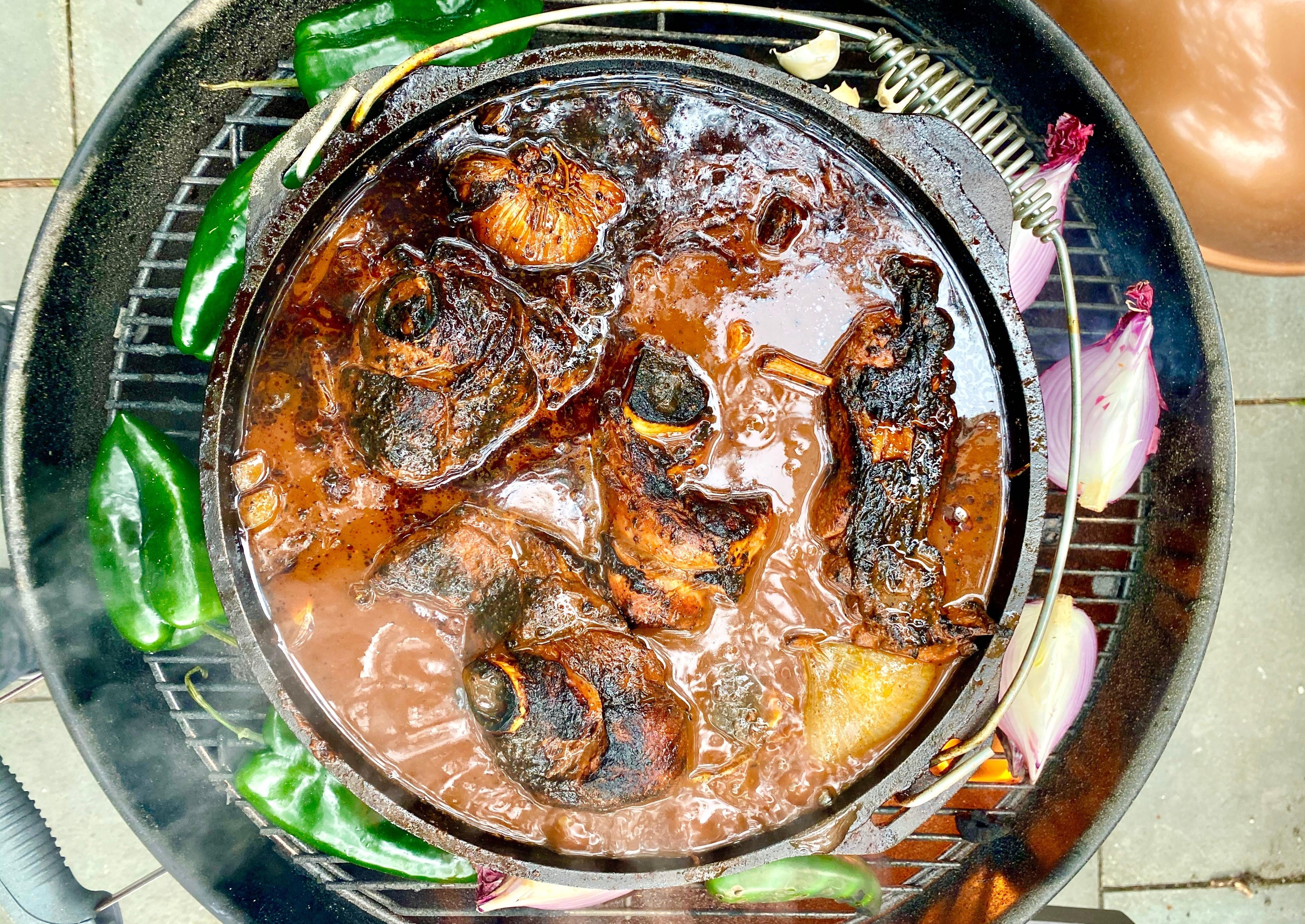Birria 101: The Making Of A Culinary Hype Beast
How birria went from from humble dish to foodie sensation.
Every so often a dish lands on the foodie consciousness that sets the culinary world ablaze, flooding visually driven social media platforms with curated pictures of influencers acting casual while playfully eating. The steady stream of pics may showcase regional interpretations of pizza or over-the-top burgers with layers of meat in the sexy third stage of the Maillard reaction, a mini Niagara Falls of processed cheese pouring over the side. But the foods that seem to captivate audiences the most, the ones that really get their mouths watering, tend to be foreign and exotic to most palates. Birria is a prime example of a dish gaining mass cultural awareness while being far from new.
Birria is a Mexican dish that recently began to gain the groundswell of popularity that ramen enjoyed here in the U.S. about a decade ago. And just like ramen—and unlike edible cookie dough and unicorn-colored whatever—birria is not some food concept that was born in a marketing boardroom. In fact, birria couldn't be more of the opposite. Working-class Mexicans make this humble dish as a special occasion meal. Aside from being showcased at weddings and holidays, it was embraced as a surefire hangover cure way before it ever made a cameo in any food influencer's selfies.
A brief history of birria
In its simplest form, birria is a traditional Mexican goat meat stew made with various chiles and spices, and is topped with chopped onions, fresh lime juice, and cilantro. The dish, whose birthplace is believed to be Cocula, Jalisco, dates back several centuries and has its roots in Spanish colonization: Goats were brought over by the Spanish and were generally considered a nuisance. They ate vegetation that native Mexicans depended on, so cooking those goats in a spicy concoction turned out to be a perfect method for population control. (Other iterations of birria may use mutton, beef, or chicken.)
Cooking methods range from live fire in pits dug into the earth, to propane-powered stovetops in adobe houses sitting on a mountainside pueblo. Birria is now made all over Mexico, and the beauty of its widespread popularity is that the dish is continually transformed into a more regional specialty, infused with a multitude of varying ingredients and characteristics imparted from the cooking process.
The many identities of birria
As birria made its way north of the border from Mexico, chefs and home cooks alike wasted no time putting their own spin on this otherwise classic dish. California is credited for launching the famed quesabirria phenomenon into the public consciousness—that is, a birria taco doused with melty quesadilla cheese and cooked to crispy perfection on a flat-top griddle. Chicago's famous Birrieria Zaragoza, meanwhile, claims to use a 200-year-old recipe.
Cities that aren't exactly the epicenter of Mexican culture, such as Nashville, Tennessee, are experiencing a birria boom of their own. Chef Julio Hernandez, owner and operator of Music City's favorite food truck, Maiz De La Vida, left his cushy kitchen job to make and sell heirloom corn tortillas. He started making quesabirria tacos with his homemade tortillas, and now people line up for blocks just for a chance to taste his magical tacos.
Hernandez is known to invite other birria experimenters to share the stage with him, such as Nashville pop-up artists Homesick Together. Their first collaboration menu was a sold-out affair that featured birria gyozas and birria ramen. They have since hosted their own events serving up birria empanadas and birria smashburgers.
Everywhere you look, birria is popping up on menus and creating a buzz. Every variation is different and none of it is wrong—it's just great food, and no matter what form it takes, we can approach it with open arms (and mouths). To categorize birria as any other stew would rob it of a personality unique to its region, even if it's tag-teaming with another dish from halfway across the world. Birria is a cornucopia of rich and complex flavors, making it a culinary goldmine for the soul. It's a hot foodie trend for a reason, and one that isn't based on an Instagram grid.
